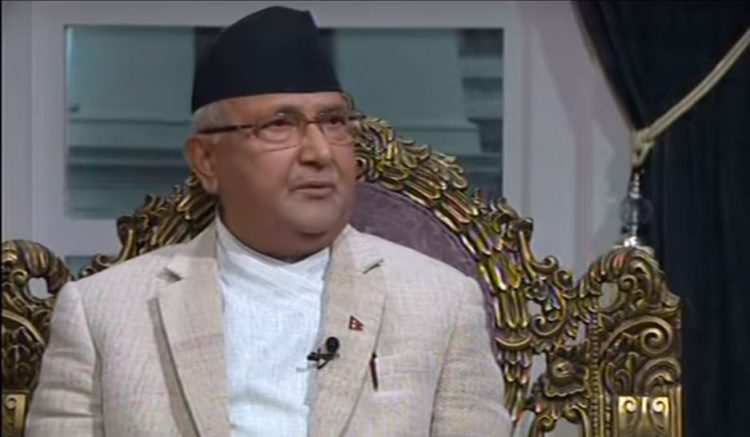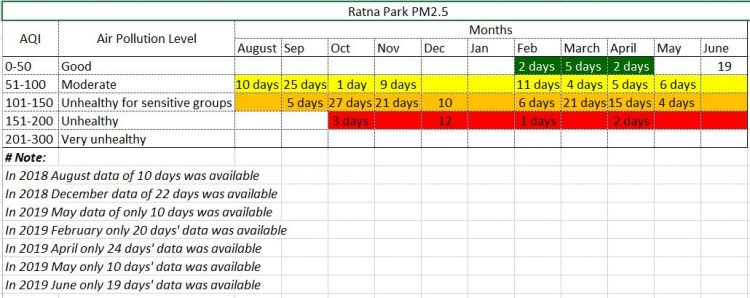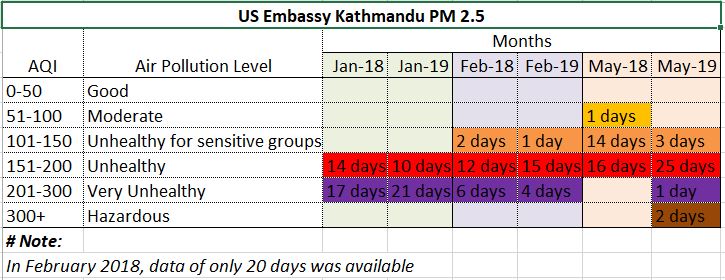Kathmandu PM levels show PM’s air quality claim baseless
Injina Panthi / July 2, 2019

. Prime Minister KP Oli
Commenting on the air quality of the Kathmandu Valley, Prime Minister KP Oli recently said: “Shortly after being elected prime minister, I had said, ‘From now onward, people won’t have to pinch their noses. I said that people won’t have to wear masks. During the time when I was just elected prime minister, half of Kathmandu’s population wore face masks. But now no one wears face mask.’”
Since the prime minister was implying that air pollution has gone down in Kathmandu, South Asia Check studied the publicly available air pollution data of the Kathmandu Valley.
The Department of Environment on its website publishes weekly pollution data only. When we approached the department spokesperson for the data of the past two years, the spokesperson declined saying it does not provide raw data. But the department has been supplying such data to other organizations which have been publishing it after minor processing. We studied Kathmandu Valley’s pollution data, which is based on the raw data supplied by the department, published by https://aqicn.org/city/kathmandu/ and found the following:
- At 10 am on July 1, 2019, the air in Ratnapark was polluted. The air quality index (AQI) value was at 197. AQI value between 151 and 200 is regarded as unhealthy. People breathing such air may begin experiencing health effects; members of sensitive groups may experience serious health effects, according to the website.
- After one hour, the AQI value at the US embassy at Phohara Durbar was 109. AQI value between 101 and 150 means such air is “unhealthy for sensitive groups” and “active children and adults, and people with respiratory disease, such as asthma, should limit prolonged outdoor exertion.”
- But after one hour, at 12 am, AQI value in the air at Ratnapark had come down to normal at 60 while the same at Phohora Durbar was 127, which is unhealthy for sensitive groups.
In the 30 days of June, the PM 2.5 concentrations at two locations of Kathmandu were as follows:
| US embassy Kathmandu | US embassy Phohara Durbar | Remarks |
| 2 days 7 hrs | 23 hrs | Good |
| 20 days 21 hrs | 17 days and 6 hrs | Moderate |
| 6 days 17 hrs | 12 days 7 hrs | Unhealthy for sensitive |
| 14 hrs | 1 day 15 hrs | Unhealthy for everyone |
Here are the monthly data on PM 2.5 and PM 10 concentration levels at Ratnapark, Phohara Durbar, and US embassy.






The US Department of State and the Environmental Protection Agency (EPA) in collaboration with the US embassies and consulates around the world collect air quality data in various cities of the world. We studied the air quality data of the US embassy location in Kathmandu collected by the embassy. We studied the data on PM 2.5, which are particulate matters of less than or equal to 2.5 microns in diameter. Here we have compared the air quality of January of 2018 and 2019, February of 2018 and 2019 and May of 2018 and 2019.

The EPA data (based on PM 2.5 levels) shows the following:
- A total of 21 days of January 2019 witnessed higher pollution levels compared to January 2018.
- In January 2019, the AQI value hit 276, which is “very unhealthy”.
- In January 2018, the AQI value had reached 273, which is also “very unhealthy”.
- A total of 24 days of May 2019 were more polluted compared to May of 2018.
- In May 2019, the AQI value had hit 431, which is hazardous. In fact AQI value exceeding 300 is regarded as hazardous.
- The highest AQI value recorded in May 2018 was 170.
Therefore Prime Minister KP Oli’s claim that air pollution in Kathmandu has come down is wrong.
This material is copyrighted but may be used for any purpose by giving due credit to southasiacheck.org.
Comments
Latest Stories
- In Public Interest Covid-19 cases are low, but that’s not an excuse to avoid vaccination
- In Public Interest What is BF.7, the sub-variant that has the world by its grip?
- In Public Interest Threat of a new Covid-19 wave looms large amid vaccine shortage in Nepal
- In Public Interest As cases decline, Covid-19 test centres in Kathmandu are desolate lot
- In Public Interest Dengue test fee disparity has patients wondering if they’re being cheated
- In Public Interest As dengue rages on, confusion galore about what it is and what its symptoms are. Here’s what you need to know
In Public Interest
 Covid-19 cases are low, but that’s not an excuse to avoid vaccination
The Pfizer-BioNTech bivalent vaccines authorised by the Nepal Government provide better protection a...
Read More
Covid-19 cases are low, but that’s not an excuse to avoid vaccination
The Pfizer-BioNTech bivalent vaccines authorised by the Nepal Government provide better protection a...
Read More
- What is BF.7, the sub-variant that has the world by its grip?
- Threat of a new Covid-19 wave looms large amid vaccine shortage in Nepal
- As cases decline, Covid-19 test centres in Kathmandu are desolate lot
- Dengue test fee disparity has patients wondering if they’re being cheated
- As dengue rages on, confusion galore about what it is and what its symptoms are. Here’s what you need to know